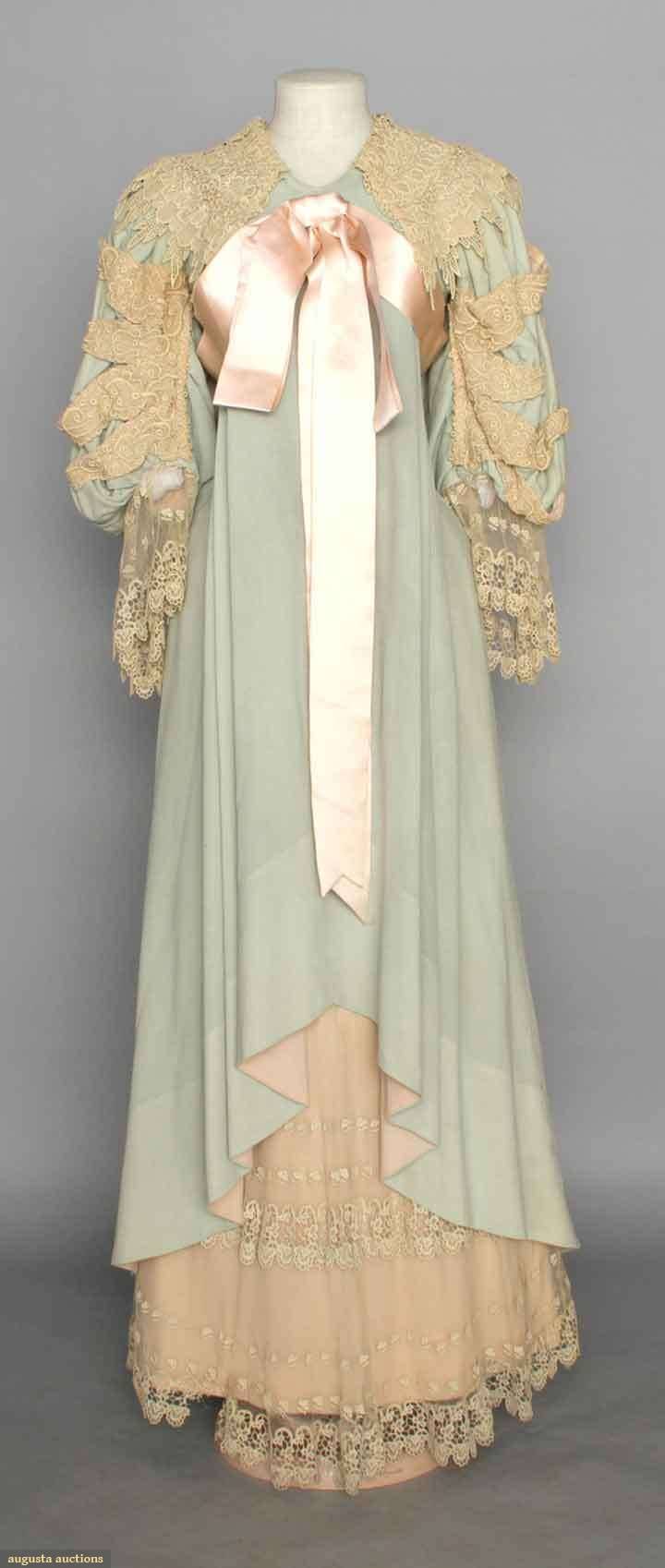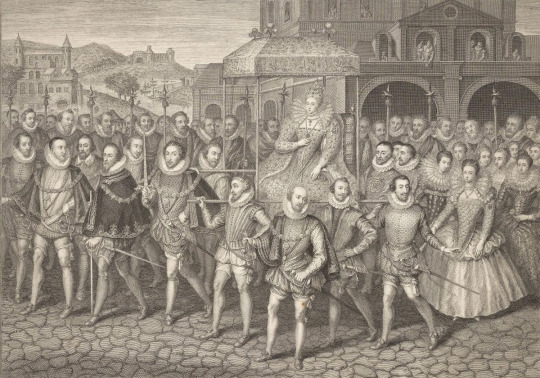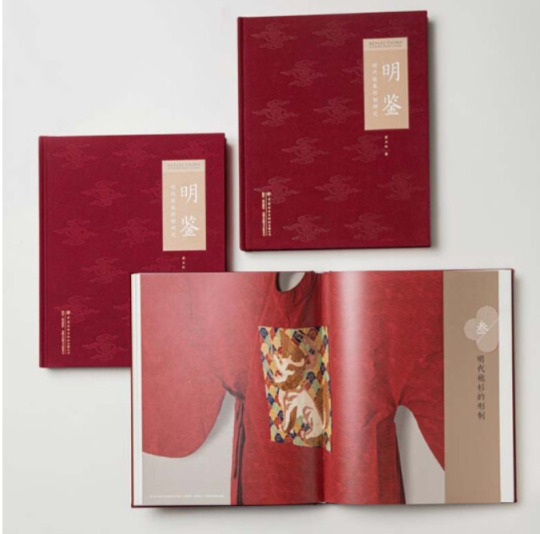#clothing history
Text
I was about to be irritated at a shitty "kids' education" website on 1770s clothing but then I learned that there's a staymaker buried at King's Chapel and now I'm just delighted to know the gravesite of a clothing worker from that era and I want to take him flowers
10K notes
·
View notes
Text
Disclaimer: I know that some folks continue to wear some or all of these items in the 21st century. This is more asking what you wish would become fashionable again so you could wear it without receiving any second glances from strangers
#history#historic clothing#clothing history#fashion#clothing#period drama#jane austen#tumblr poll#tumblr polls#poll#polls#cottagecore-raccoon
4K notes
·
View notes
Text


Wool and lace morning gown, c.1895
august auctions
#fashion history#historical fashion#victorian fashion#1890s#1890s fashion#victoriana#edwardian fashion#historical clothing#clothing history#edwardiana#edwardian era#victorian era#19th century fashion#extant garments
781 notes
·
View notes
Text

From River to the Sea Palestine Will be Free and it’s History / Culture Will Never be Erased!
🇵🇸🇵🇸🇵🇸
#history#palestinian keffiyeh#headscarf#palestine#keffiyeh#fashion history#traditional clothing#middle east#medieval period#rural life#palestinian history#fashion#yasser arafat#cottagecore#ruralcore#anti colonialism#traditional culture#clothing history#palestinian culture#free palestine#ottoman empire#islamic golden age#middle eastern history#1930s#1960s#nickys facts
98 notes
·
View notes
Text
Let's Talk Costuming: Come on, Hamlet! Buck up!

Welcome, my friends, to the Renaissance, or to be more specific in geography and time, the Elizabethan period! Shakespeare! Protestantism! Great fun! For context, this scene likely takes place sometime around 1599-1601, towards the end of Queen Elizabeth's reign.
What I find most interesting about clothing of this period (aside from how silly looking some of it is) is that this is the era of ~*sumptuary laws*~ so every piece of clothing you see tells you a story about the person wearing it! Of course, I can't imagine Crowley or Aziraphale are all that concerned with being mistaken for a duke or somesuch, but it's fun to image what an onlooker may have thought of them.
Note: The focus of this analysis will be on Aziraphale's costume and on Elizabethan sumptuary laws. Crowley is up next, and his costume analysis will focus more on composition.

[text of a Royal Proclamation dated 15 June 1574, British Library]
Sumptuary laws have been around for a while, and they served a dual purpose during the Elizabethan period. First and foremost, they set to reinforce class boundaries by forbidding one to dress above ones station, but they also sought to reduce foreign imports of excess frippery that drained English pocketbooks. The proclamation even warns that young men of the realm, having spent their fortunes on fine clothing, will turn to lives of crime to satisfy their appetites.
These laws regulated all kinds of things: the textiles one could wear, in what colors, how much a guy could pad his calves out for ultimate sex appeal, really anything you can think of. That's not a joke, in fact a man in 1565 was detained for wearing "a very monsterous and outraygous greate payre of hose," which likely refers to a 1562 regulation on hose, ruffs, and swords. Hose could not be "containing in the netherstocks and upperstocks more than one yard and a half, or above one yard and three-quarters at the most, of the broadest kersey, or with any other stuff beyond that proportion," nor could they be lined excessively or constructed with too much fabric.
This same law regulated ruffs, like the ones we see at Aziraphale's neck and sleeve cuffs, to only a single width of ruffle, which dear Azi is following:

Where he might find himself in a spot of trouble, though, would be in the colors he's wearing. The color combination is rather divine on him, but the use of gold embroidery on clothing is forbidden unless one ranks as a Viscount or above. Now, could it be argued that Aziraphale, as an angel and a principality, has a privileged rank of his own? Yes, it could, but that takes some of the fun out of this.
His doublet (cute little jacket) appears to be a silk damask dyed in a lighter shade of blue, so likely woad. He would be safe in all these regards. Were the blue indigo, he could get in trouble for that, however, as that rich shade of blue was reserved for the upper echelons of the gentry as well.
Swords notwithstanding, the cut of Aziraphale's garments is reminiscent of several of the gentlemen in the foreground here:

[Royal procession of Queen Elizabeth. Printed by and for J. Nichols and Son, London, 1823. Folger Shakespeare Library]

As usual, we see Aziraphale in a tasteful iteration of the era's clothing that incorporates his character's color scheme. The incredibly dramatic silhouettes of the era definitely leave their mark, but he ends up looking rather refined rather than ridiculous.

[The Tailor, Giovanni Battista Moroni, 1565-1570]
This portrait gives a great view of these outrageous pants up close, as well as a jacket very similar in design to the one Aziraphale wears in this scene. The primary difference between the two is that the tailor is dressed appropriately for a craftsman, plain colors and not much extraneous ornamentation. Against this, Aziraphale certainly stands out, with his fancy trims and such, and would thus necessarily be identified as a member of the gentry by anyone in his vicinity.
This is important, because his positionality in this world is very clear. As in many of our historical moments, Aziraphale's wish to blend in only extends to a certain degree. He complies with the style of the era, and I suspect even enjoys his little games of dress-up, but as time goes on he creates more distance between himself and the garb of the peasantry. In some of the biblical era flashbacks, he's dressed rather plainly, but in later periods we seem him as a knight, a rather foppish Victorian gentleman, and finally in his well loved 20th century gentleman outfit that he keeps well past the point of anachronism.
He leans into these little luxurious identities in part because he is an angel, yes, but he is also slowly falling in love with all the beautiful little things that humanity has to offer. And what does the renaissance give him? Great works of theatre, luxurious gold embroidered silk jackets, and slutty little pumpkin shorts.

He's adorable, you have to admit. My sources, for your further reading pleasure or to prove I did my research:
-https://blogs.loc.gov/law/2014/02/sumptuary-laws/
-https://www.bl.uk/collection-items/proclamation-against-excess-of-apparel-by-queen-elizabeth-i#:~:text=During%20the%20reign%20of%20Queen,on%20luxuries%20such%20as%20clothing.
-https://www.folger.edu/blogs/shakespeare-and-beyond/sumptuary-laws-rules-dressing-shakespeare-england/
Ta ta, have a wonderful day, and I hope you enjoyed our little history lesson.
#good omens analysis#costume design#history#clothing history#good omens#good omens costumes#historical clothing#aziraphale#aziraphale good omens#michael sheen#neil gaiman#I spent eight hours in the library today writing a paper why did I come home and spend another two hours researching this
142 notes
·
View notes
Video
youtube
Chinese Hats and Headwear in the Three Kingdoms 1994 and its history
One of our contributors @csarracenian has subtitled another educational video about the history of various hats and headwear in the 1994 Romance of the Three Kingdoms, explaining their history and meaning and showcasing the high research quality of the show.
Video is made by 是椰果啊 on bilibili & released with their permission.
#three kingdoms#chinese drama#dynasty warriors#chinese history#hanfu#historical#period drama#romance of the three kingdoms 1994#rotk#汉服#冠#history#clothing history#fashion history#ancient china
133 notes
·
View notes
Text
So, I've started a ghosts fic, and I know this is a weirdly specific question, but I haven't found anything googling.
Can anybody tell me when we start seeing fanlacing on stays/corsetry? I know I've seen plenty of 1830s examples, but was it common by the mid/late 1820s (1826-1828)? When was it invented?
97 notes
·
View notes
Text
New stats post!
🦇25 y o woman, finnish
🦇 applying for PhD (in literature) september 2024
🦇 graduated, masters degree (literature) on july 23
🦇 learning norwegian (i should pick up a book in norwegian and attempt to read it) my lovely partner is norwegian and i want to speak his language, so far i guess i'm "survives basic conversation if talked to slowly"
🦇 learning korean (writing system so far)
🦇 likes reading and studying (for fun)
🦇other hobbies: being in nature, going to metal/punk/goth events, being tired at home
🦇 trying to find a "normal" job so i can then study in peace without money stress
Distant future studt plans:
🦇 languages i want to learn: ukrainian, old norse, church slavic, polish, german (revisiting), spanish
🦇 fields of study i'm interested in: decolonial study, literature, art history, history (medieval, iron age, non-european/western) feminism, posthumanism, philosphy, violence studies (basically "why are some people violent/do crimes and how it can be prevented")
#university student#uni life#applying for phd#student life#studentblr#studyspo#studyblr#studyblog#literature analysis#literature student#classic literature#norsk langblr#learning korean#language learning#study motivation#classic academia#dark academia#academia#decolonial study#decolonization#history studyblr#iron age history#medieval history#clothing history
11 notes
·
View notes
Text
The Destruction of Creation: How bobbin lace versus machines relates to digital art versus AI
This is something that is completely my own opinion, no real research has been done, just observation. I, as a whole system, have been thinking about this for a while and just needed to get these thoughts out.
In the back end of September 2023, I began to learn a skill I've wanted to learn for over a decade, lacemaking. It's one of those hobbies that is always on the edge of dying out, but there's always resurgences and weirdos like me making sure it keeps its head above water.
To some lace is something ugly, for old grannies and yellowing curtains in old houses. To others lace is only for the romantic and sexual moments in their life, a wedding dress and lingerie. But most people can agree, it's a bit old fashioned and not for the every day. I thought a lot of lace was ugly myself when I was young, but then I saw antique bobbin made lace and suddenly I could see what people wanted really. The beauty of fine lines building up something like an eternal snowflake.
When I had an income I used to commission artists fairly frequently, but one sort of artist I couldn't afford to ever commission were those with the highly detailed, beautifully shaded, realistic backgrounded art. Theirs was around £300 and rightly so with the hours of work they would spend on each piece and the years of honing that skill beforehand. But these pieces of art were wanted and some people when they can't bear to part with money, or an appropriate amount of money, will spend their time instead working out work arounds.
In the 18th and 19th centuries lace was found all over clothing, especially clothes for the upper classes. But as industrialisation thundered ever louder in the 19th century and the middle class became truly distinct, they wanted this lace for themselves to appear more like richer folk, but also to adorn more numerous items of clothing that factories allowed one person to own. And so it becomes, why pay a village woman to take a good couple of months on your lace collar when we have machines and factory workers now that can make the rest of the outfit in days? Surely a machine can be made that will do it quicker and require less money? And yes they could. These machines very quickly became the main way people would get lace, especially Bedfordshire and Bucks Point style laces.
But people adapted, learnt how to make quicker simpler, less impressive lace that was still pretty, known as torchon lace. They fended off the machines for a good thirty years too, the machine makers unable for those thirty years to get machines to copy torchon lace correctly and quickly. They jammed and tangled, causing more trouble than it was worth in the eyes of factory owners. But come the 1870s, lace making machines had 'improved', making torchon lace also and a skilled art quickly began to fade.
I see this in artist communities I'm a part of too. Digital artists discussing how to imprint their art with un-copy-able code, make the AI falter and spend longer to make something worse. I've seen other artists saying they are dropping their hyper realistic art styles though, so they can be quicker and lower their prices so people will still commission them maybe? Trying to remove a distance between arguing with AI through prompts and reprompts to get sort of the picture you want for free and paying a human who you can clearly describe what you want and pay them. It truly is the same story happening once again.
But the most sickening thing for me is my thoughts on the hyper realistic art style. I had been on DeviantArt since I was 12, I loved this sort of art, seeing book characters, anime characters bounding about, leaping through the air, hair flapping and clothes swishing about with gorgeous lighting.
So much time and skill and learning went into getting there. I know this really. But now, I have to catch myself when I see art in this style because my first thought is 'Oh, AI rubbish is getting better with hands'. Art, that is beautiful, just on the off chance it is cheaply or freely made without skill, is rubbish. Put in the bin and discarded. That doesn't mean I think we should admire AI art. We should hate it for what it is, the machine that snatches food, ideas, skills and artistry from people, just as machines did over a hundred years ago. It really sickens me.
Because I know people began to think the same thing about lace. It became tacky, nothing special, rubbish. Something that was once an asset just like jewellery, trod into the dirt because everyone could have it now as it was churned out by machines. But hundreds of years of skills were stolen by those machines. Those machines and inventors couldn't come up whole cloth with those lace designs. They needed the lace makers to even exist.
I have no real conclusions other than, please don't let AI art make you hate an art style just because it steals from it. And maybe people should like lace more, especially bobbin made lace like I'm learning to make.
#fuck ai art#anti ai art#ai art is art theft#bobbin lace#lace#textiles#fibre arts#textiles history#costume history#clothing history#thoughts from the hart
17 notes
·
View notes
Text

Jacob Davis and Levi Strauss & Co.’s Fastening Pocket-Openings, patented on May 20, 1873.
The pocket-openings are secured by rivets, preventing them from ripping.
Record Group 241: Records of the Patent and Trademark Office
Series: Utility Patent Drawings
Image description: A person stands, holding the handle of a pickaxe. Their pants have circular rivets at the corners of the pockets.
47 notes
·
View notes
Text
Hey textile history side of Tumblr, I am tossing this message in hope to reach you with a question.
How come we never see pockets in historical clothing like pants? External pockets (like those in cargo pants) are not difficult to sew and do not require particularly modern or fine fabric. I know that many gowns had inner pockets or waist pockets.
Is it because most examples of historical costumes that reached us are the fancy kind?
#textiles#textile history#history#costume history#dress history#historical dress#historical documentation#medieval clothing#clothing history#sewing#historical sewing
7 notes
·
View notes
Text
why are skirts inherently evil and oppressive in historical fiction until men are wearing them
I've never heard anyone going on at length about how Universally ImpracticalTM the garb of a Scotsman or an ancient Roman politician are
suddenly everyone has a concept of situational practicality that previously was not there
#history#clothing history#historical fiction#'SKIRTS are so IMPRACTICAL-' always? every time? for everyone?#because I don't know about you but I live in a city and work in museums#skirts are A-okay for me#also people have done MANY types of physical activity in skirts for centuries. sometimes pants are more practical for sure!#but. not always.#and you never hear fiction authors talking about how oppressed Scotsmen are by their kilts#'he couldn't FUNCTION because he wasn't wearing PANTS!' I'd like to see someone try it
2K notes
·
View notes
Text
book review 《明鉴:明代服装形制研究 》

《明鉴:明代服装形制研究》 by 蒋玉秋 (ISBN 9787518083428 )
A big catalogue of existing, known artifacts of Ming dynasty clothing, not including accessories such as shoes, belts and jewelries.
The artifacts were separated by general types of clothing, such as short tops, robes, trousers and skirts, and then by collar types.
Line drawings, some measurements and photos of artifacts (if available) are also included.
Does not go into the details of sewing techniques, patterns and matching combinations.
Provide a good linear view of how a piece of garment developed in style with time.
Included some literature review on said garment.
Most importantly, pointed out the original excavation reports of each piece of artifacts.
In overall of good place to quickly understand the development of garments in Ming dynasty.
#book review#china#chinese history#clothing history#chinese book#book#ming dynasty#ming#fouryearsofshades
53 notes
·
View notes
Text


Lace and ribbon flower tea gown, c.1912
augusta auctions
#historical fashion#fashion history#edwardian fashion#clothing history#historical clothing#extant garments#1910s#1910s fashion#1910s dress#1910s style#edwardian era#edwardiana#20th century fashion#e
362 notes
·
View notes
Text

Earmuffs were originally created by the local people of Farmington, Maine!⛸️
🇺🇸
#history#earmuffs#chester greenwood#fashion#farmington#american history#maine#1800s#winter wear#cottagecore#inventor#holiday season#fashion history#happy holidays#clothing#coquette#winter season#soft girl#united states#clothing history#ear protection#historical figures#invention#world war 1#nickys facts
12 notes
·
View notes
Note
Opinions in hemp cloth/fabric? I saw one of your post talking about polyster vs cotton/wool/linen
Hi! Thank you for the question! When I was writing that post/addition, I actually forgot the existence of hemp (not that it's among the most important natural fabrics today (sadly)). And when I went to check some sources to make sure I didn't get things wrong, I learned that cotton also gets stronger when wet, which I had previously learned the other way around. (I had gotten it wrong in that post too.)
Hemp is an amazing material. It's very similar to linen in it's properties, in some regards even better. Like linen it's extremely breathable, so great for hot weather, and antibacterial, so it doesn't smell easily and when against skin, keeps it cleaner too. It has even better water absorption abilities than linen, which is why it doesn't feel wet even when it has absorbed a good amount of sweat or water in general. Like linen (and apparently cotton) it gets stronger when wet too, which makes washing and sanitizing it without damaging it easy. It's also even before getting wet super strong, the strongest plant fiber there is. It even has one ability linen doesn't have (nor most plant fibers) it's UV resistant, adding to it's great abilities for summer use.
One thing I didn't mention in that post about linen, which makes it still very relevant, is that growing linen is so much more ecological than growing cotton, which requires a ton of fresh water. Flax (the plant linen is made of) grows very easily in fairly harsh conditions and doesn't need fertilizers, which are often damaging to the ecosystem. However, hemp does the same and better. It's very resistant to pests, so doesn't need extra pestilence that could have adverse effects to the ecosystem, and unlike most other monocultural farmland, it even enriches the earth, keeping the earth resistant against erosion.
All of these properties are why it was used for sails and ropes for millennia. Its very long and strong fibers allow it to be made into very thick canvas excellent for sails. Hemp canvas was also used for stiff interlining. But it got me thinking, why isn't hemp often talked about in clothing history (except in the fact that it was the first plant fiber to be woven into fabric)? It has such obviously excellent properties, which surely would have been attractive to pre-industrial people with limited resources. After looking around I found couple of explanations.
Hemp was indeed used widely for clothes, especially in rural setting. Since it became the first plant fabric in central Asia, it was the primary fabric for clothing in China till the introduction of cotton around a millennium ago. It was used in Europe too since the Goths introduced it in antiquity. However in historical texts (at least in 16th-18th century) hemp cloth is also often referred to as linen and it can be hard to distinguish if the fabric written about was actually made from hemp or flax, since they did make fairly similar cloth. There was a limiting factor too for more widespread use of hemp, since it's processing into fabric was labour intensive, which got better in Industrial Era, when some of the most labor intensive parts were able to be mechanized. It was though very easy and cheap to grow, and needed especially little attention in summer, when farmers had most work. Because of it's enriching properties it also could be grown in the same plot year after year. For these reasons it was often grown in small quantities within small-scale farming even when large scale farming was becoming more common. It's perhaps where the rural association came from, as it was likely grown for personal household textiles and not for selling.
Though there was of course larger scale farming of it and records of selling it by merchants after feudalism started fading, even if the labour intensive processing made it less profitable. Apparently one of the most popular usages for hemp in clothing was men's shirts, for upper and lower classes. Sailors also often wore hemp clothing as it was so excellent and durable in all the conditions that would come across at sea. Hemp also was not as fine as linen, and while very fine hemp was soft and as linen softens in use and with every wash, it still wasn't quite as soft and fine as linen could be. So especially upper classes, who wouldn't need the maximum practicality and durability, would opt into linen, which was still very practical and durable, but also a bit more comfortable against skin.
At the time, when labour was plentiful and relatively cheap compared to land, hemp was still profitable. Entering the Industrial Era this started to change as industrial production requiring less human labour was much cheaper and therefore left more profit margin, so the capitalists now controlling production would greatly favor materials that could be produced industrially. While the processing of hemp became less labour intensive with mechanization, it was still much more labour intensive than cotton for example, which was the first thing that was industrialized. Hemp production was still fairly wide through 19th century and to early 20th century, even if declining in it's share of the clothing production like all the rest of the natural fabrics (except cotton).
But then the war on drugs happened. Now the hemp typically used for clothing is not exactly the same used for weed (there's different strains and then male and female and it seems complicated and I don't know that much about plants), what I read it doesn't have at least very strong psychoactive qualities unlike those used specifically for weed (though there was some overlap). Of course that didn't stop growing hemp being banned very widely, leading the hemp fabric production to plummet in the latter half of 1900s. Growing hemp has become easier now, but the prohibition still create hurdles for farmers. Which sucks a lot because it's such an amazing material and with modern mechanized processing it's cheap to make (and can be made to be really soft) on top of being excellent quality and gentle to environment.
So I guess my opinion is hemp is great we should make more of it instead of cotton and especially synthetic fibers and legalize weed.
#answers#history#textiles#textile history#fashion history#fashion#clothing history#dress history#fabrics#hemp
145 notes
·
View notes